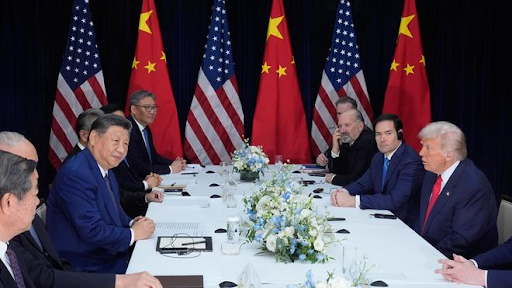




Copyright infringement not intended
Picture Courtesy: https://www.resonanceglobal.com/blog/what-is-the-international-energy-agency-iea
The International Energy Agency (IEA) reports that the global market for clean energy technologies is expected to reach $2 trillion by 2035.
It is an autonomous intergovernmental organization established in 1974 (following the 1973 oil crisis) under the framework of the Organisation for Economic Cooperation and Development (OECD) to respond to the disruptions in global oil supplies.
Its main objective is to provide policy guidance to its member countries and associated countries to support energy security and accelerate the transition to clean energy.
It publishes several reports including; Energy Technology Perspectives, World Energy Outlook, Oil Market Report, Net Zero Roadmap.
The headquarter is located in Paris, France
The 31 member countries and 13 association countries of the agency represent 75% of global energy demand.
India joined the organization in 2017 as an Associate member.
A candidate country for the IEA must be a member of the Organisation for Economic Cooperation and Development (OECD).
|
The OECD is a global organization of 38 countries committed to democracy and the market economy. It also works with non-member economies like India. |
Membership eligibility criteria
Accession countries are those in the process of obtaining full membership.
All IEA member countries have signed the Paris Agreement to limit warming to 1.5 °C, and two-thirds of IEA member governments have committed to being emission neutral by 2050.
The global market for clean energy technologies is expected to increase from $700 billion in 2023 to more than $2 trillion in 2035. China, the European Union, the United States, and India to benefit from their large investments in the clean energy sector.
Global investment in clean technology manufacturing increased by 50% in 2023, resulting in USD 235 billion. Solar PV and battery manufacturing received four-fifths of the clean technology investment, electric vehicle (EV) plants accounting for 15%.
China is expected to remain the world's largest manufacturer in clean technologies, with clean technology exports more than $340 billion by 2035. Production costs in the United States are about 40% higher than in China, and about 25% higher in India.
Southeast Asia could become a low-cost location for producing polysilicon and wafers for solar panels, Latin America (particularly Brazil) could expand wind turbine production, and North Africa could emerge as an EV manufacturing hub.
Must Read Articles:
INTERNATIONAL ENERGY AGENCY (IEA)
ORGANISATION FOR ECONOMIC COOPERATION AND DEVELOPMENT (OECD)
Source:
|
PRACTICE QUESTION Q.Consider the following statements in the context of the International Energy Agency (IEA): 1. It is an autonomous intergovernmental organization. 2. It represents 75% of global energy demand. 3. Two thirds of members have made commitments to emission neutrality by 2050. How many of the above statements are correct? A) Only one B) Only two C) All three D) None Answer: C Explanation: Statement 1 is correct: The International Energy Agency (IEA) is an autonomous intergovernmental organisation, it was established in 1974 to provides policy guidance, and data on the global energy sector. Statement 2 is correct: The 31 member countries and 13 association countries of the International Energy Agency (IEA) represent 75% of global energy demand. Statement 3 is correct: The IEA's main objective is to provide policy guidance to its member nations and Associated countries in order to support energy security and accelerate the transition to clean energy. Two-thirds of IEA member governments have committed to being emission neutral by 2050. |




© 2026 iasgyan. All right reserved